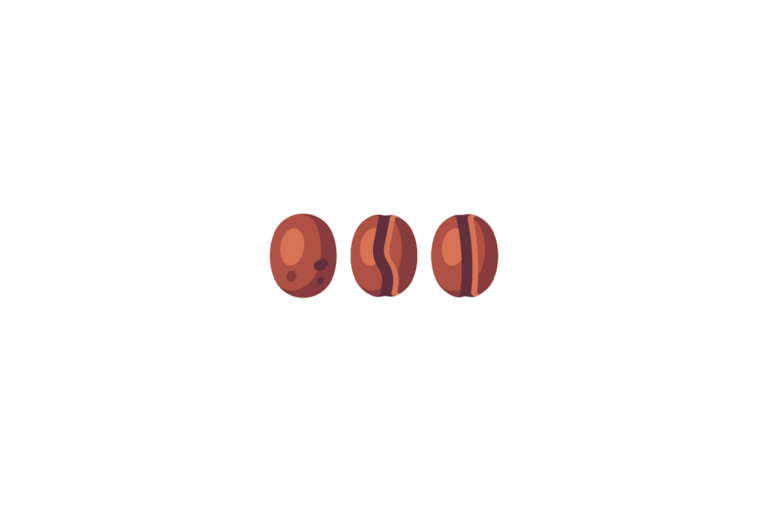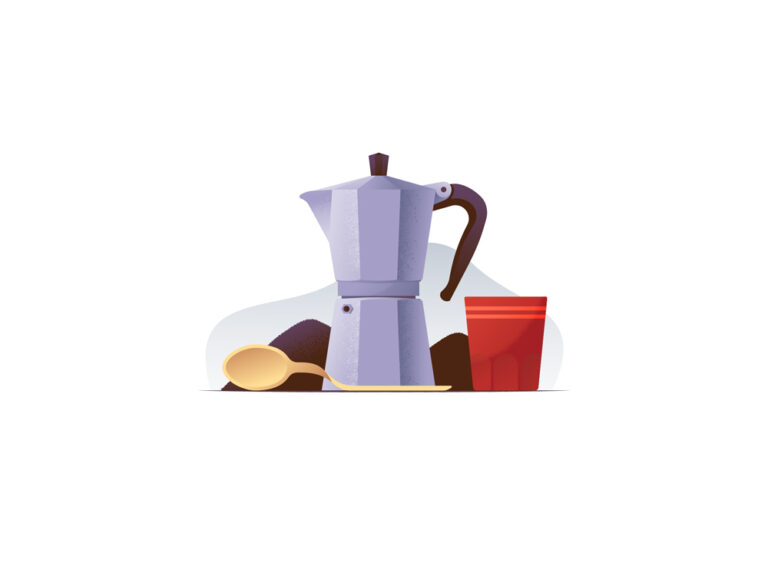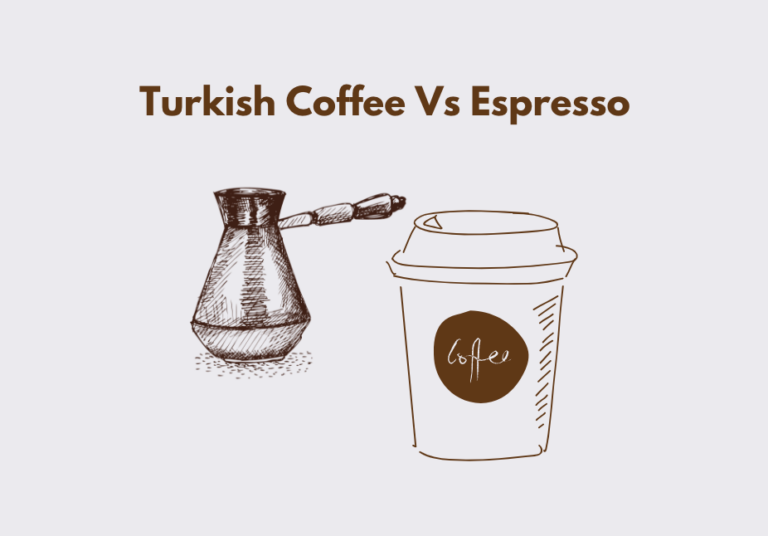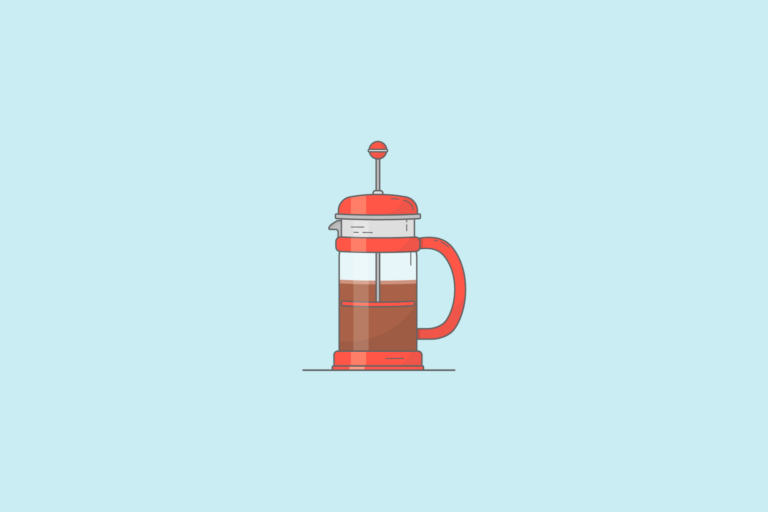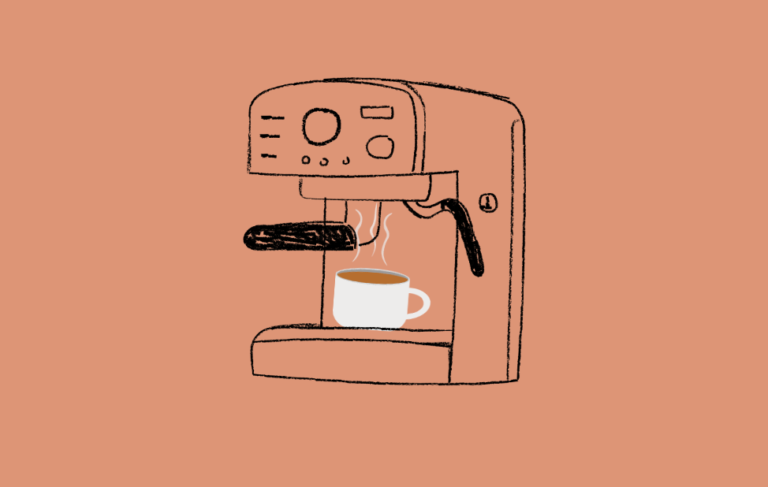
This post may contain affiliate links. As an Amazon Associate and a partner of other brands, I get a small commission if you purchase through my links, at no extra cost from you.
If you’re looking for a coffee grind size chart, you’re in luck.
You probably know the basics of coffee grinding – you buy whole beans and grind them to your desired strength.
But, did you know there is actually a right way to grind coffee for a specific brew type?
And the most important thing about that is that the size of your ground coffee matters!
Learn everything you can about grinding your coffee with this one-stop guide for beginners and experts alike.
Grind Size Coffee Chart – An Overview
For starters, it’s important to note that it’s 1000x better to grind your beans before brewing.
No one likes under-extracted coffee, and if you’re using cheap or mediocre equipment to make your coffee, this will occur because of inconsistent grind.
This is why it’s crucial to start fresh with an electric burr grinder. More on that later!
There are different grind sizes in the coffee world.
The general rule is: the finer the grind size, the more flavor it will have.
But, if you are very picky about getting maximum flavor precision, it’s best to go against this rule.
You want to find your personal “sweet spot” to maximize flavor for your taste buds.
There are six different grind sizes that are used for coffee:


Why Does Grind Size Matter?
So, You may be asking yourself, why is grind size important?
Well, there are a few reasons why it matters.
1. Grind Size Affects Taste
The consistency of your grounds determines how much surface area is available for extraction.
If you start with a more coarse grind and brew it in a large vessel, you’ll extract less of the coffee’s flavor than if you had used a finer grind size and did the same thing.
The smaller your grind, the more surface area there is and therefore more coffee flavor you’ll get out of the brew.
2. Grind Size Affects Brew Time
The physical size of the grind is only part of the equation, however, because there are different densities within each size category.
You see, coffee is ground up from beans that are already broken into smaller pieces.
So imagine a hunk of freshly roasted beans – some parts are thick and dense while other parts may be light and fluffy.
Each of these pieces will then be pulverized into small particles that ultimately end up at your desired grind size.
The thicker the piece of bean originally was, the higher the density will be in your ground coffee.
If you want a stronger brew, you’ll want to start with a coarse grind and then carefully control your brew time by how long you steep your grounds.
Similarly, if you’re trying to get a milder-tasting brew, start with a finer grind and use a longer brewing process.
3. Grind Size Affects Steeping Time
Aside from taste, grind size affects steeping time. The larger the particle size, the slower they release water into your cup.
This can mean that you can end up with a stronger brew with more time, but you’ll also end up with weaker coffee when you normally would have brewed it in less time.
Ideally, you want your ground coffee to be between the consistency of sea salt and table salt.
The size of your ground coffee is referred to as “coarse” or “fine”.
Finely ground coffee has a tendency to over-extract, whereas coarsely ground coffee won’t extract enough.
A correct coffee grind size chart can help eliminate this over-extraction that occurs when the coffee is ground too fine or under-extraction when too coarse.
The Roles Of Coarse & Fine Grinding
So what is the ideal size grind for your coffee?
There are several ways to consider this question, depending on what kind of coffee drinker you are.
The Ideal Grind Size For Espresso
If you’re looking for the ideal size grind for espresso, you want to aim for a very fine grind.
This is because espresso pulls very hot water through the coffee grounds in a very short time.
This means that you’ll extract all of the flavors in your coffee grounds in just 20-30 seconds!
To get to this ideal size, you need to use an espresso grinder – these are made specifically to provide an even finer amount of grind than other coffee grinders.
This is an ideal grind for espresso and I strongly recommend you start with a fine grind and slowly adjust your brew time by 5-10 seconds each time you change your coffee grounds.
The Ideal Grind Size For Strong Coffee
If you’re looking to brew a medium to a strong cup of coffee, you’ll want to look at a coarsely ground grind.
In general, the coarser the grounds, the weaker your coffee will be.
The ideal grind for coffee can really depend on your specific tastes – you might want to look at the difference in the flavors of your favorite drip versus espresso versus French Press.
This can help you determine which grind size is best for your favorite method of brewing.
These are all methods where you’re looking to start strong and end mild, so this should give you an idea of what sort of coffee grind size is best for each method.
If you’re trying to choose between fine or coarse, I say go with the coarser grind.
There’s nothing wrong with fine ground coffee, but if you want to try something different or if you don’t like the flavor of your usual coffee grounds, it’s worth experimenting with a coarser grind.
The Ideal Grind Size For Cold Brew
If you want to make a cold brew, you need to start with coarse grounds – since cold brew is brewed in so much water, it needs a lot of surface area to extract the most flavor.
The ideal grind for cold brew is somewhere between coarse and extra coarse.
You can find many different sizes of burr brewers for this method, each one designed with its own specialty in mind.
If you’re looking to try cold brew, I recommend using either a French Press or AeroPress.
The Ideal Grind Size For A French Press
A french press is another method of brewing that requires you to spend time with your grounds, letting them steep in water for a period of time before filtering out the tasty goodness.
This is because french press coffee is light and delicate compared to the other brew methods.
As such, a coarse grind will taste better than a fine one and that’s exactly what you want in a french press.
If you’re new to brewing with a french press, start out with a coarse grind size.
This will give you a strong brew, but not so strong that it overpowers the delicate flavor of french press coffee.
A French press is generally used for making medium to strong cups of coffee that are very flavorful.
It’s an ideal method if you like strong coffee that can stand on its own.
As such, I recommend using a coarse grind size when brewing with your French press – this will give you the strongest brew possible!
The Ideal Grind Size For Espresso
If you’re brewing with an espresso machine, you want a fine grind.
This is because espresso machines brew very hot water through your grounds very quickly – this means that you only have about 20-30 seconds to extract as much flavor as possible!
For this brew type, a coarse coffee grind size isn’t going to give you enough flavor. It will result in under-extraction, which you DO NOT want.
The main reason you would want to use a fine grind with your espresso machine is because you’re looking for a strong yet delicate and flavorful brew.
The Ideal Grind Size For Pour Overs
Pour-over brewing is another method of brewing coffee – the result is much like an espresso, but it’s much lighter and more delicate than your average drip.
As such, you need to have a medium to medium-fine grind.
This method allows for a very slow extraction process, which is ideal when you’re steeping your grounds in over 200 degree water over 10 minutes.
If you’re using pour-overs for coffee, I recommend starting with a medium-ground coffee and slowly adjusting your grind until you feel that it suits your tastes.
The Ideal Grind Size For Drip Coffee Makers
A drip coffee maker is probably one of the most common ways to brew coffee at home.
If you’re looking to brew with a drip coffee maker, look for a medium grind you can have at your disposal.
This is because if your grind is too coarse, it can clog up your filter – especially if you have low-quality filters.
The Ideal Grind Size For Chemex
If you’re using a Chemex, you want to use a medium-coarse grind size.
This is because the Chemex has a very thick filter that will allow for a slow extraction of your grounds, which you want when using this method of brewing.
This is why I don’t recommend using a Chemex with both coarse and fine grinds – they are simply too different to get an ideal flavor.
Try to stick to medium-coarse if you’re looking to use the Chemex.
Why Use A Burr Grinder Over A Blade Grinder?
To understand why a burr grinder is better than a blade grinder, you need to understand how a blade grinder works.
Blade grinders have blades that spin fast and shred your grounds into a fine powder.
The problem with this style of grinder is that it’s often designed to grind very coarse coffee – this means that it can’t adequately handle the finer grinds that you may want.
In addition, blade grinders do not produce a consistent grind size – this is because they rely on the grinder itself to spin and chop your beans.
The speed of the blades will vary from use to use, which means that you’ll get different grinds each time.
In contrast, a burr grinder uses two grounding plates that turn against each other at a very slow rate.
This allows these grinders to produce an even grind size whether you’re going for fine or coarse coffee grounds.
The problem with burr grinders is that they’re often expensive, but they’re also very durable.
If you want to get the most out of your coffee at home, I recommend using a burr grinder over a blade grinder.
Final Thoughts On Coffee Grind Size Chart
I hope this coffee grind size chart helped you to better understand grinding coffee beans!
It can be a little bit overwhelming to figure out what grind size you want, but with a bit of practice and a few scraps of coffee, you’ll be a great barista in no time.

